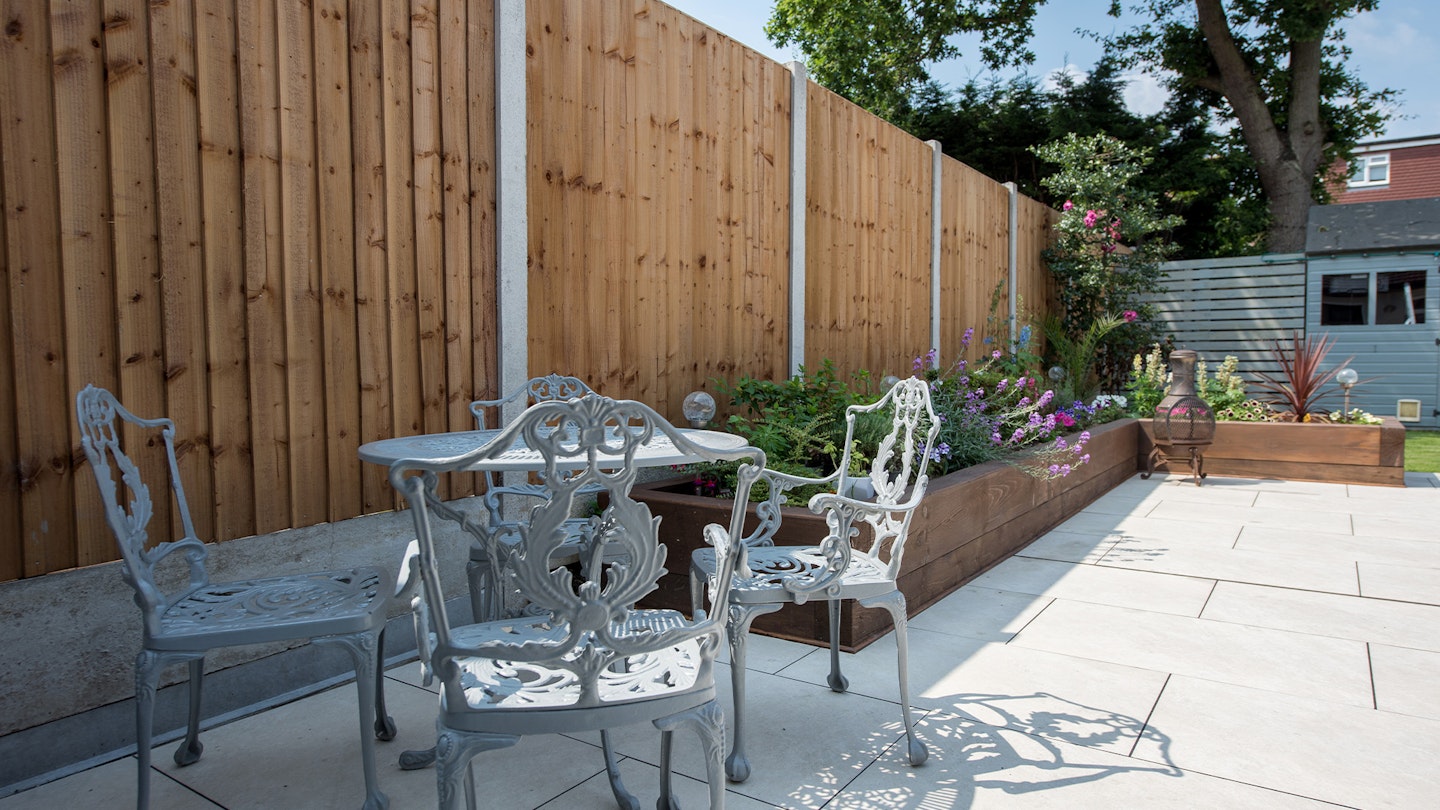If you want to spruce up your garden there’s no better place to start than replacing your wooden fencing. Chances are, at least one side of your plot is lined with garden fencing. As well as providing privacy and improving security, they could be setting a stylish tone for time spent outdoors, perhaps even matching any garden structures, such as wooden pergolas, ideal for entertaining al fresco. The latest wooden fence panels come in a wide choice of designs, materials and finishes and can completely transform the look and finish of your garden, creating a modern backdrop for the rest of your garden.
It wasn’t so long ago that the choice was limited to off-the-peg softwood panels with overlapping rough-finished boards and naturally undulating edges, but the market is now filled with fab options for a wide range of budgets.
Wooden fencing can now be sleek panels of vertical or horizontal boards as well as covetable evenly spaced batons. And garden designers have also spearheaded a trend for dark and glossy hardwood fencing, with iroko, teak and walnut becoming popular choices alongside the more usual cedar and spruce.
Best wooden fencing at a glance:
• Best traditional: Traditional Lap Fence Panel - View on B&Q
• Best bespoke: Ruby Double Sided Planed Slatted Panel - View on Ruby
• Best modular: Contemporary Garden Slatted Fence Panel - View on Contemporary Garden
So before you start shopping for wooden fencing, it’s good to understand more about the practical benefits each can bring, so you can future-proof your outside space and make the most of your hard-earned pounds.
Best wooden fencing for your garden
Best traditional
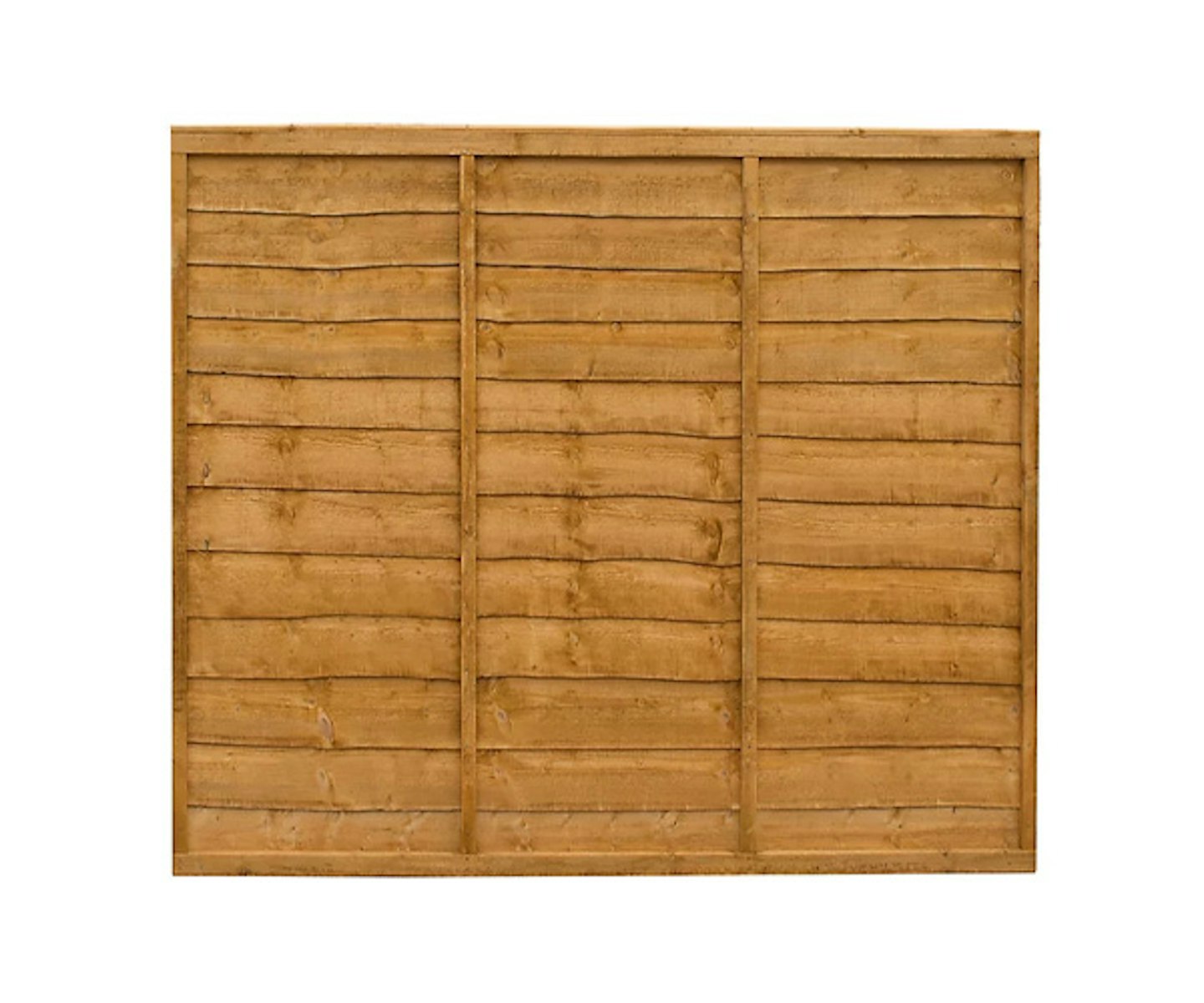
www.diy.com
Whether you require a new boundary or need to replace your panels, this fencing will provide a classic border so you can enjoy spending time in your garden. These measure 152cm high - just under five foot - so are tall enough to offer privacy when seated. These panels have been dip-treated for longevity and come with a 10-year guarantee.
Pros
- Dip treated
- 10-year guarantee
Cons
- May have knot holes
Best bespoke
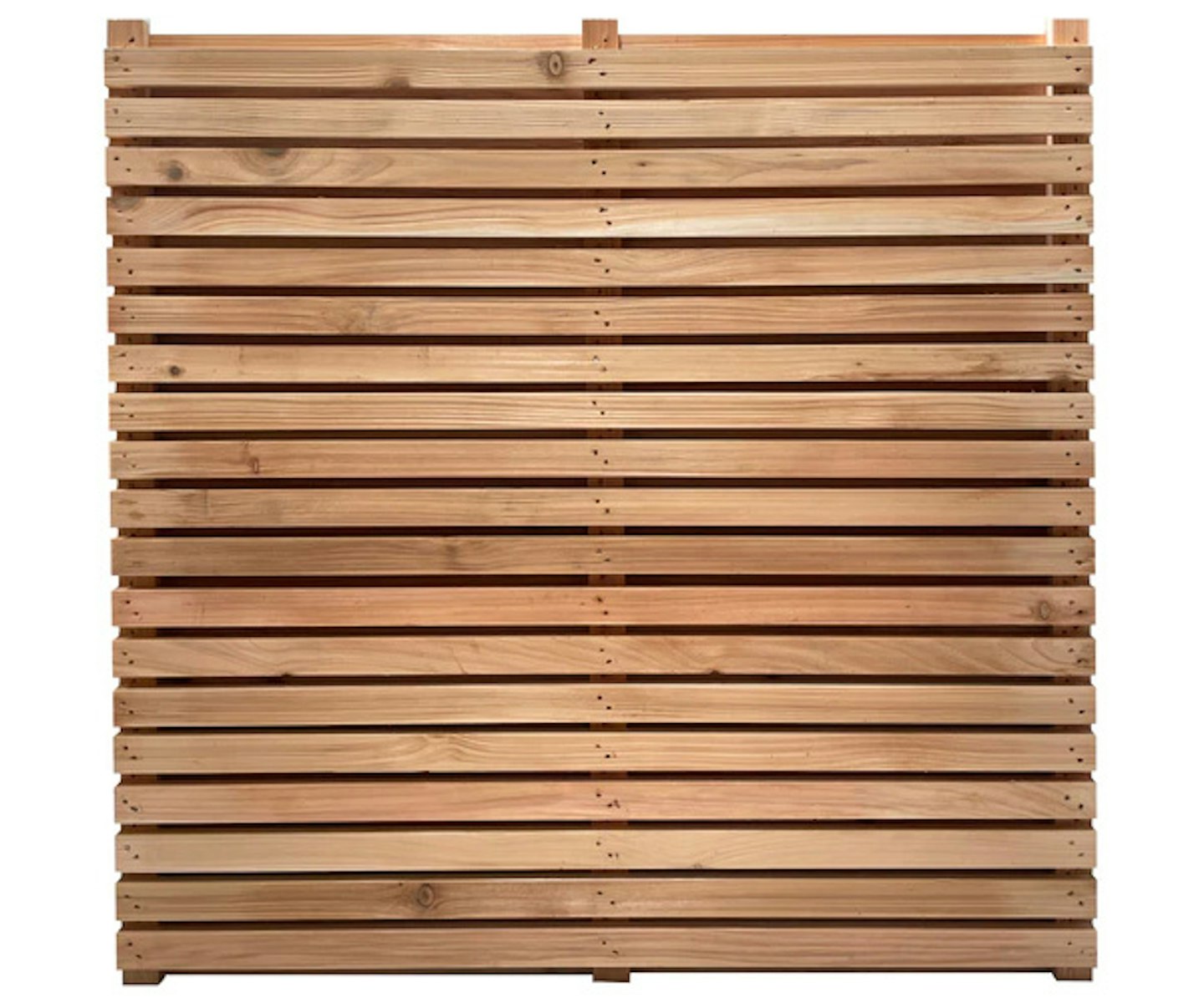
www.ruby-group.co.uk
These slatted panels are a cool, contemporary choice. Ruby offers them in a variety of sizes, from 0.6 to 2.1 metres wide and high, and in cedar or larch wood. Essential for anyone who has an unusually shaped garden, you can also order bespoke with measurements to suit your space.
Pros
- Can be made-to-measure
- Larch and cedar
Cons
- Can't be returned
Best modular
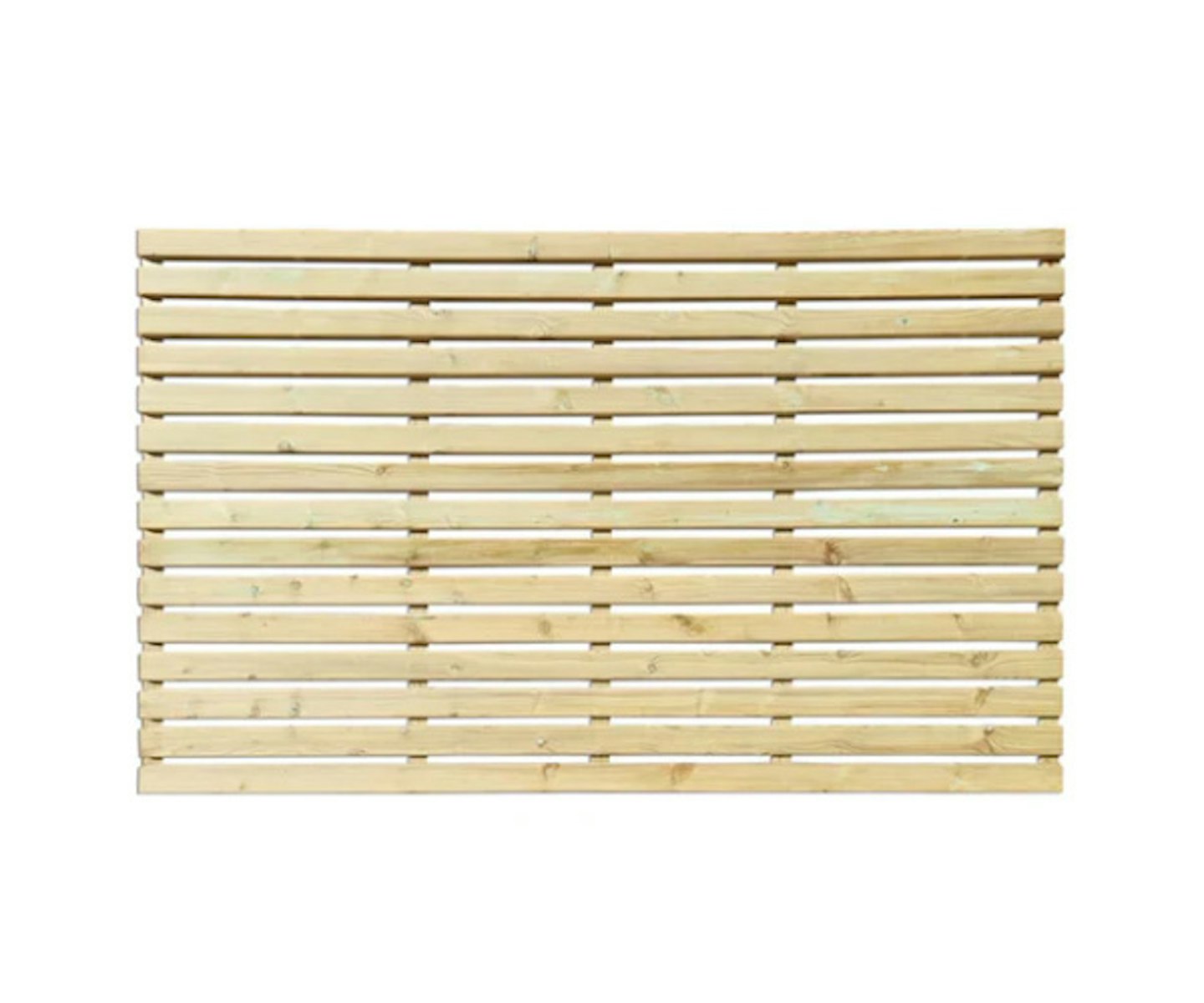
www.contemporarygarden.co.uk
This unique design is a must-have look for any modern garden and the modular nature means you can select panels to suit your project. The shorter panels work well as patio and decking borders and can also be used to top brick walls. These panels are designed to fit the face of a timber post for a continuous effect. You can be reassured by the 15-year guarantee against rot, and if you love this look, matching gates are available.
Pros
- Wide range of sizes
- Works well as border fencing
Cons
- Only available in one finish
Best double-slatted

www.gardenstreet.co.uk
Rowlinson's double-slatted panels with alternating horizontal battens instantly add a neat contemporary feel while still providing robust privacy. These are made from pressure-treated softwood with a planed finish. Pressure treatment offers high resistance against rot and mould, making these a good choice for damp gardens.
Pros
- Pressure treated
- Double slatted
Cons
- Three panel minimum order
Best single-slatted
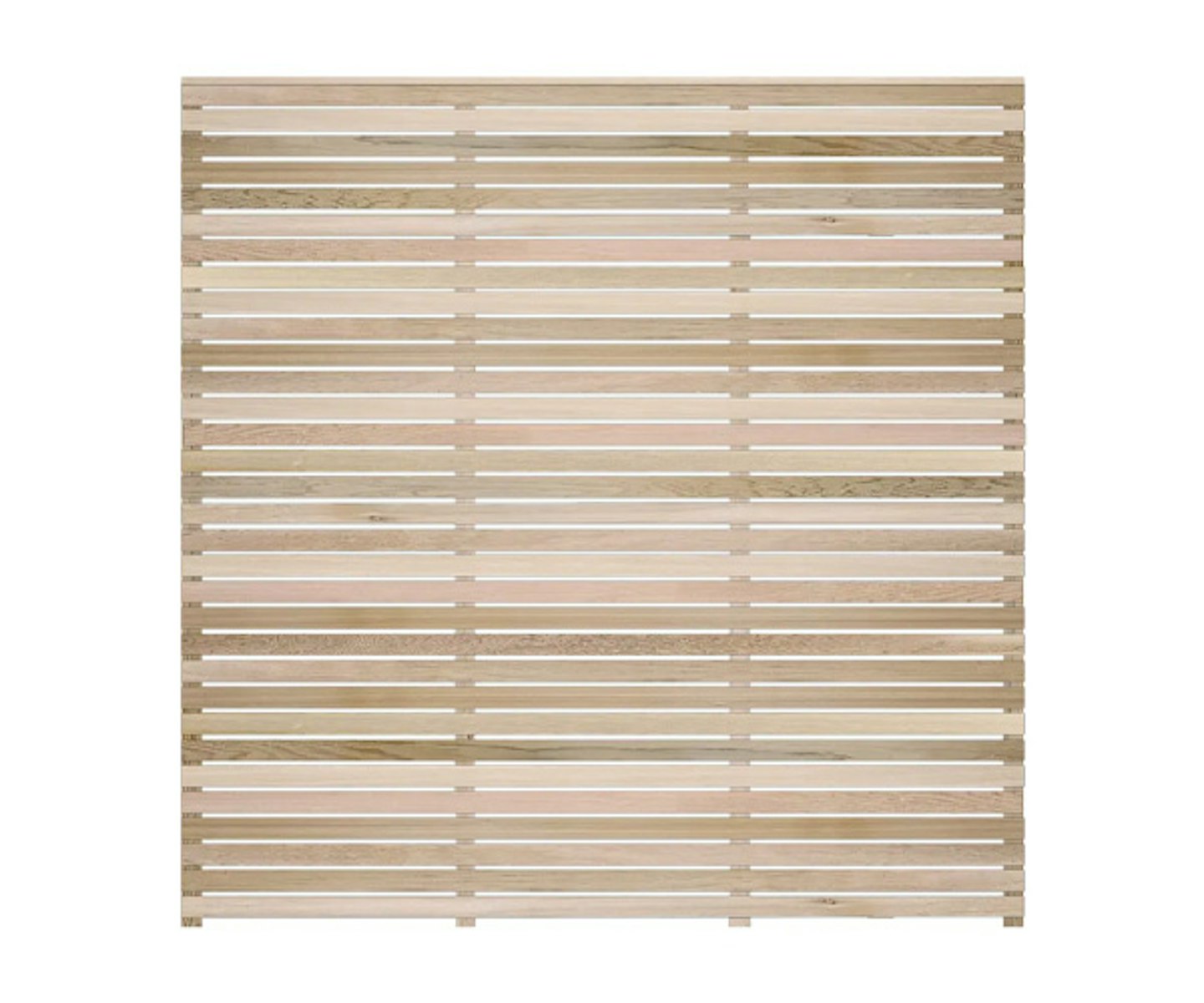
www.slattedscreenfencing.co.uk
Cedar slats are favoured by many garden designers as the natural tones and sleek lines create a stunning backdrop for plants. Although technically a softwood, cedar has a high level of natural oils, which help protect it against rot, mould and decay. These panels are available in a range of heights and two widths; 180cm and 210cm. You can also choose between two different gap sizes, 6mm and 12mm, useful if you want to allow light into a smaller area.
Pros
- Made from Canadian cedar
- Bespoke orders available
Cons
- Will require protective treatment
Best pre-painted
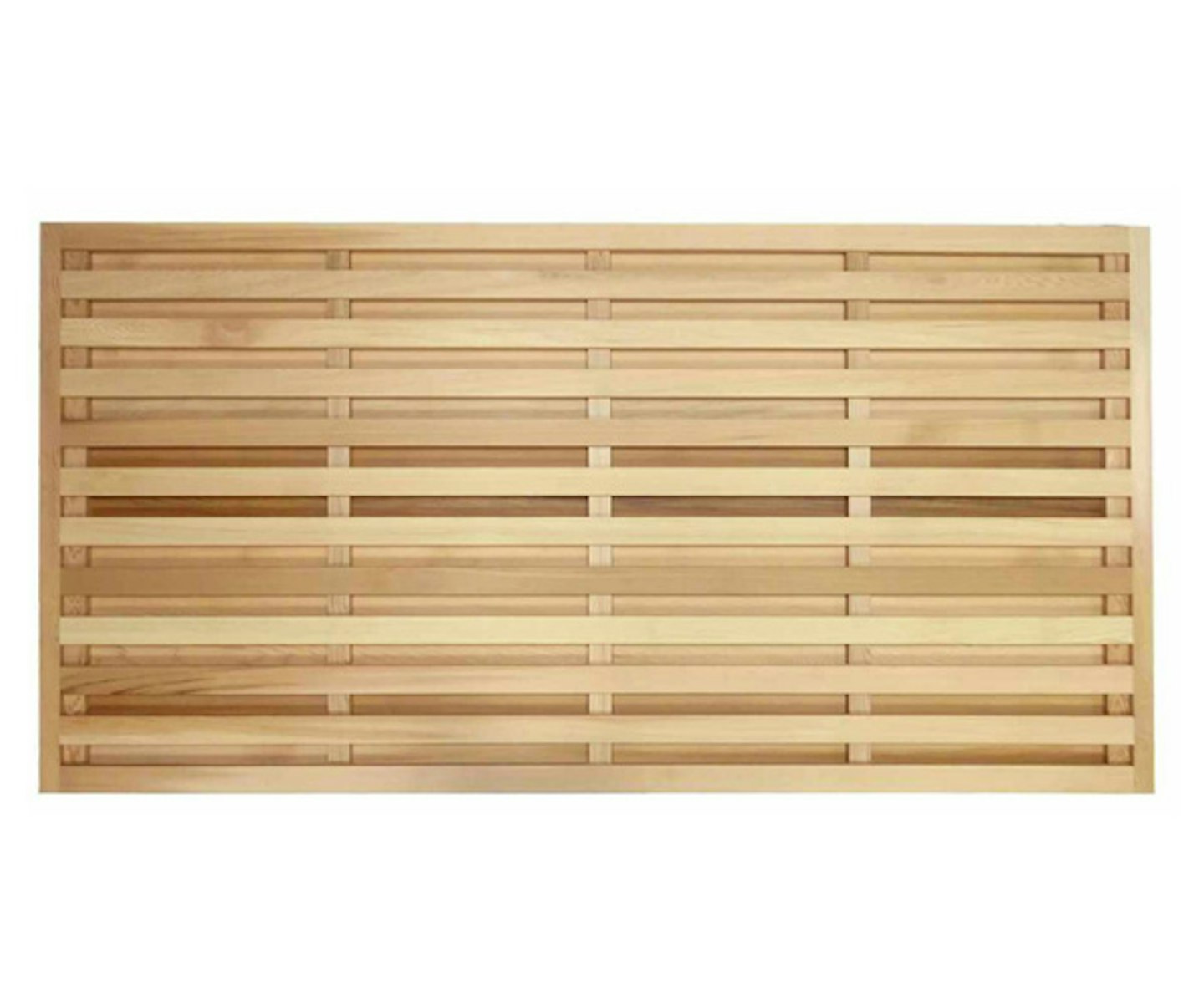
www.gardentrellis.co.uk
These RHS-endorsed fence panels are a convenient choice, available pre-painted in a range of charmingly named colours, such as "Autumn Tide," "Gorse Green," "Manhattan Grey," and "Hazel Brown." These are stylish, hand-made contemporary double-sided slatted panels featuring alternating 45mm slats with a 35mm gap on both sides to provide complete privacy.
Pros
- Pre-painted
- Double-slatted
- RHS-endorsed
Cons
- Visible staples on panel's rear
Best tongue-and-groove
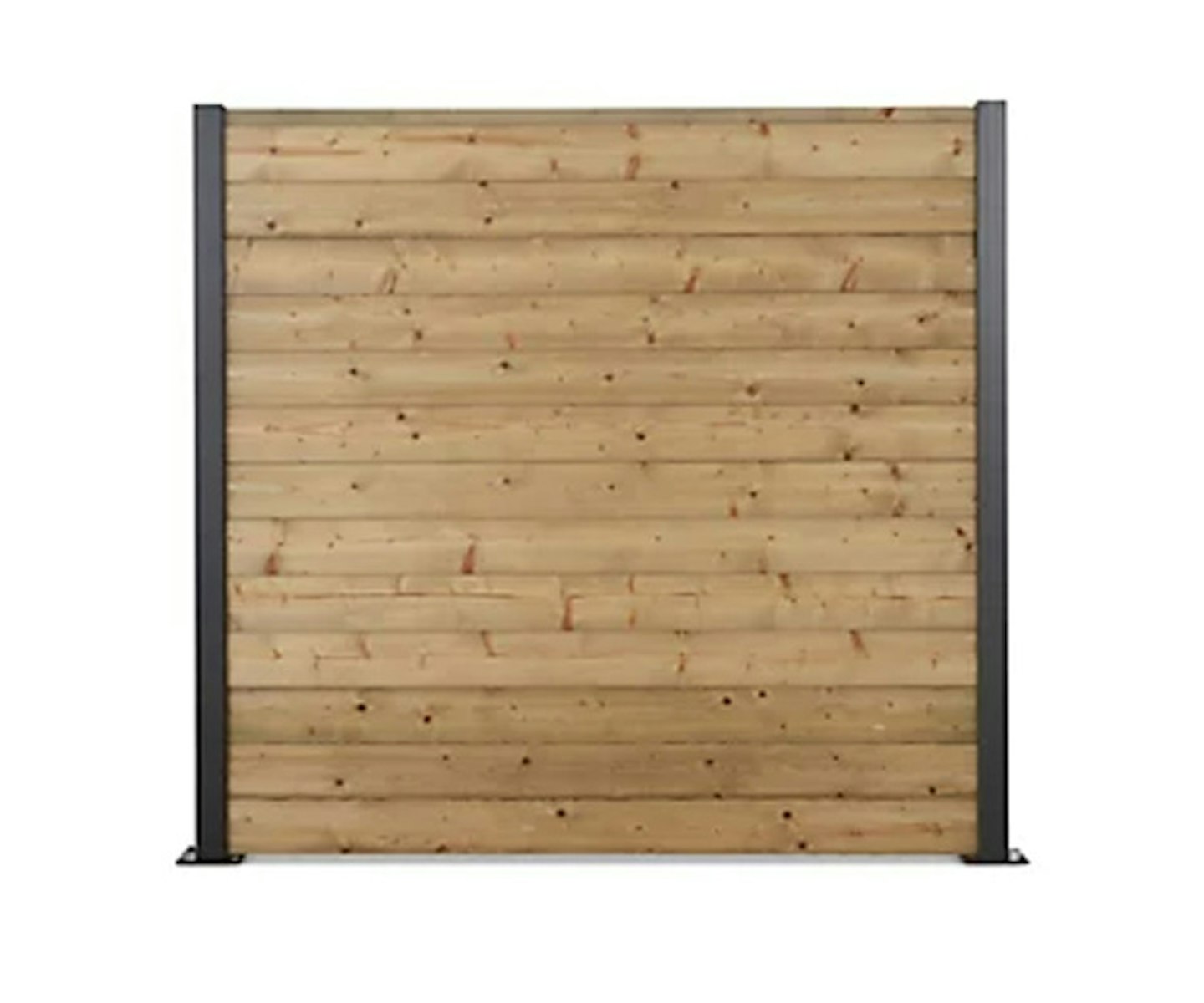
www.diy.com
This is another choice that's a solid option if you need a fence that’s a specific height. This is another modular fence system where you can slide as many tongue-and-groove boards into a slotted fence post to gain the height you want. Top off the main fence with a slatted panel if you fancy letting more light through or want to support attractive climbing plants.
Pros
- Flexible
- Modular
- FSC-approved
Cons
- Fence posts sold separately
Best for high-wind areas
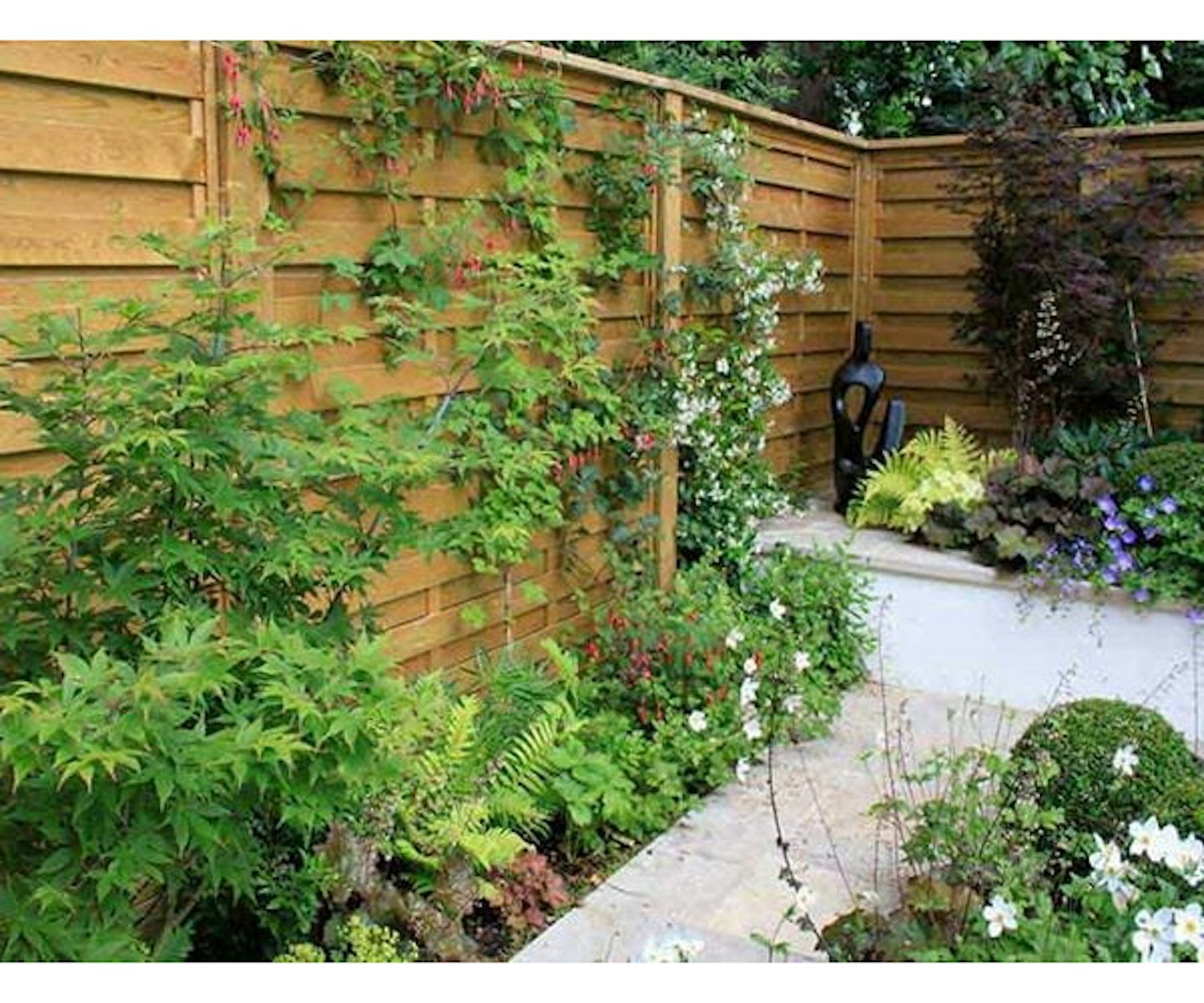
www.jacksons-fencing.co.uk
If you live in a high-wind area, you'll know the importance of choosing wooden fencing that can withstand robust gusts. This "hit and miss" design offers just that. Alternating hit-and-miss slats on either side of a rigid timber frame give this panel uber-smart looks with no gapping. It’s ideal for creating a beautiful run of fencing with character and clean contemporary lines.
Pros
- 3D appearance
- Matching gates available
Cons
- Capping not included
Best for DIY
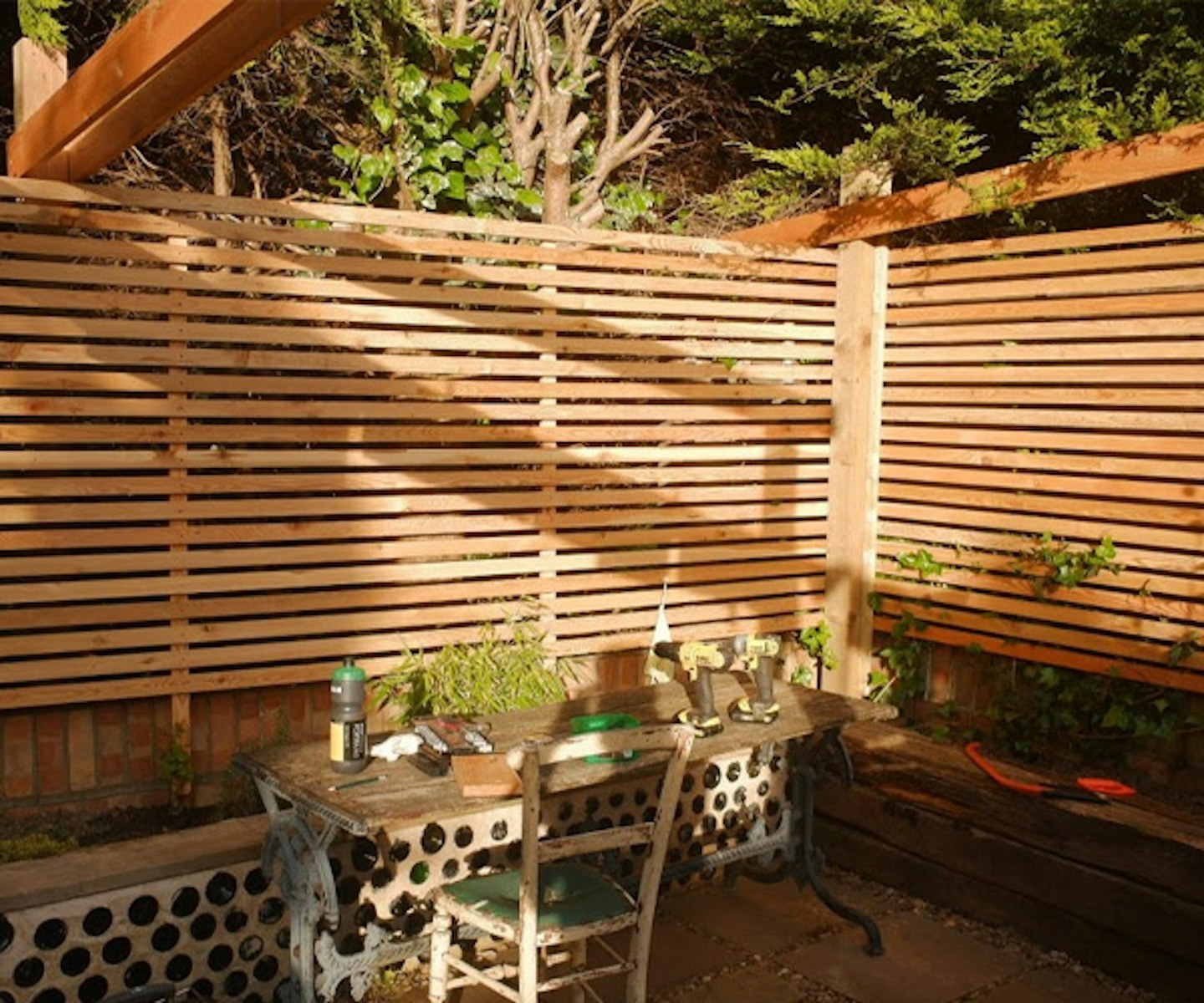
www.timberulove.co.uk
Depending on your project and your DIY ability, it can be more economical to buy individually paned battens and attach them to vertical posts yourself rather than buying panels. Naturally rot-resistant with a beautifully even grain, Siberian larch should be your go-to timber as it is so durable it doesn’t tend to split or warp, and it’s pretty affordable too.
Pros
- Dense grain
- Premium Siberian larch
- Low maintenance
Cons
- Only supplied as slats
Best contemporary
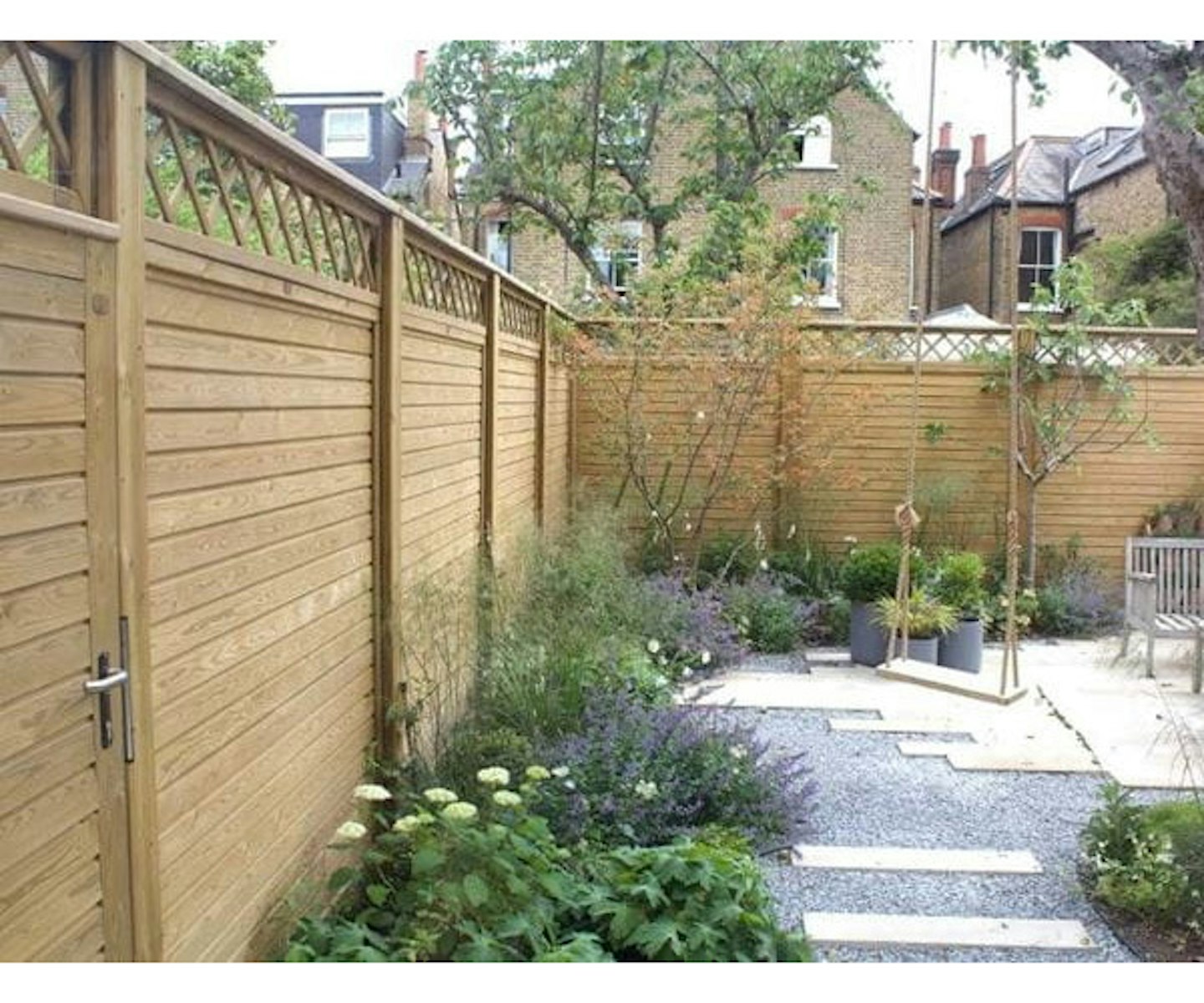
www.jacksons-fencing.co.uk
Made from pressure-treated softwood, these modern-looking panels have a tongue-and-groove construction resulting in a strong rigid design. Offering a flatter, more elegant surface than slatted styles, they’re less prone to trapping debris and can easily be pressure washed clean before an annual touch-up with a protective coating or lick of paint. These panels come with an impressive 25-year guarantee.
Pros
- 25-year guarantee
- Stainless steel fixings
Cons
- Only available in one width
Which type of panel should I choose for my wooden fence?
Not just a matter of looks alone; practical considerations should always be high up on the wishlist when choosing fence panels. Weigh up exactly what you need from your fence. Is privacy or security an issue? If so a close board panel – and there are a few different types – could be your go-to option.
Featheredge and lap panels are both close board panels and feature overlapping lengths of timber, often reinforced with cross rails, while tongue-and-groove close board products have boards that slot neatly into one another to form a solid flat surface. Featheredge is also great for sloping or undulating plots as the bottom of the boards can easily be trimmed to neatly fit the ground’s contours. All three create robust fences that maximise privacy and peace of mind and are readily available as panels of various heights and widths and as individual boards.
Want a more contemporary look? Then slatted fence panels are the current chart-toppers, featuring smooth timber battens. Choose battens on one side to create a see-through fence, often called Venetian, or staggered on both sides for more privacy, called hit-and-miss panels. Brilliant for exposed locations because they let air flow through, so helping to limit storm damage, they also avoid casting deep shade while still providing a degree of privacy. They support climbing plants well too.
Is softwood or hardwood better for wooden fencing?
Fence panels are either made from soft or hardwood, and each has different properties, lifespans, benefits and disadvantages. Popular softwoods include spruce, cedar, larch and pine. Fast-growing evergreens, these trees take just 40 years to reach maturity at which point they can be felled and easily processed. Producing timber that’s light in weight and colour, these products tend to be an affordable option.
Spruce has an even grain with minimal knots and marks making it perfect for a neat modern look while Siberian larch has a particularly dense grain that can cope well with exposed conditions. Western red cedar is worth looking out for as besides being naturally rot-resistant and repellent to insects, it’s also free of sticky sap pitch as well as resin, so it’s excellent for a few coats of fence paint and staining.
Quick-growing pine is a readily available and affordable option. However, it must be pressure treated with either an oil- or water-based preservative to make it resistant to rot and damp. Light in colour, the wood can take on a greenish tinge when pressure-treated so aesthetically it’s best stained or painted rather than left in a natural state.
Although softwood products are the most keenly priced on the market, their major drawback is that they require extra protection to prevent them from rotting quickly in Britain’s wet and damp climate. Manufacturers treat the panels by dipping or soaking them in preservatives – more on that later – but the wood also needs an annual application to prolong its lifespan. And even then, you can only expect softwood fence panels to last an average of 15 years.
Hardwood is fast becoming a popular option for garden fencing, and this tough and durable material lasts far longer than softwood. Until recently these undeniably good-looking woods were mostly confined to interiors on account of their high cost and tricky-to-work-with nature, but they’re now increasingly being used to create high-end fencing.
Teak, Sapele, iroko, meranti and traditional oak are all sourced from slow-growing deciduous trees. Taking up to 150 years (in the case of oak) to mature, these timbers have a dense grain that can cope admirably with harsh elements, lasting for up to 50 years if properly cared for. However, these beautiful timbers are heavy to handle and require a fair amount of preparation before they can be processed and products constructed, all factors which drive up the end retail price.
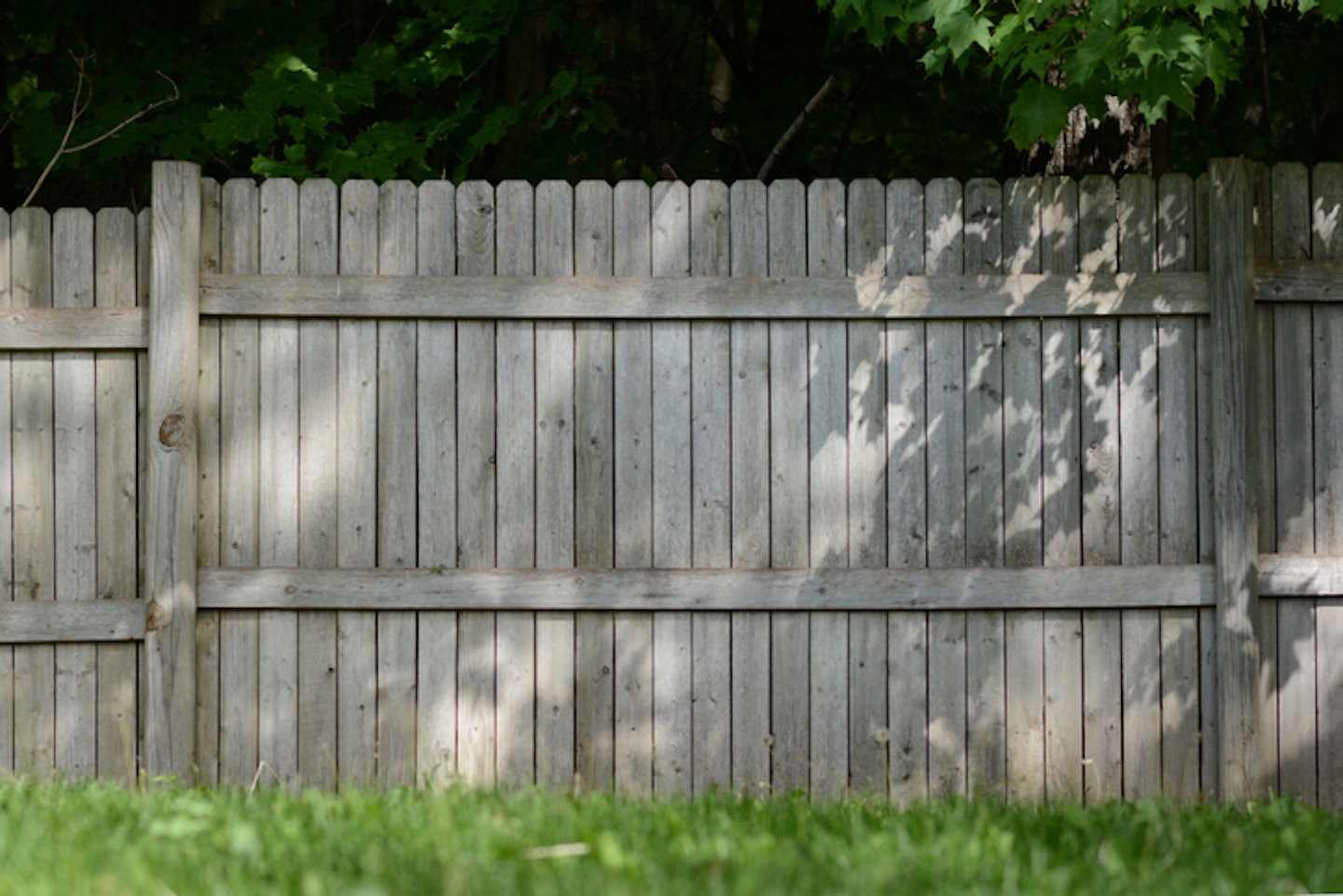
How can I make sure I’m buying wooden fencing responsibly?
Sustainability is an important factor for many homeowners and the safest way to make sure timber products are responsibly sourced is to look for accreditation from the Forest Stewardship Council (FSC) or Programme for the Endorsement of Forest Certification (PEFC). This indicates that the specific materials have been grown in well-managed forests or come from recycled sources.
Want to buy locally sourced timber? Look for FSC certification C007915, which guarantees the timber is responsibly sourced from the UK and Ireland.
How is the wood preserved?
Knowing the different preservation processes used will help inform your final purchase and evaluate whether a product deserves its price tag, as the treatments affect how long your fence will last and how much upkeep it will require. Pressure-treated timber is put through a vacuum and chemical preservatives are forced deep into the woodgrain to protect it from decay. Tanalised timber is pressure-treated timber, the name simply refers to the brand of preservative used (Tanalith).
Dip-treated timber is briefly submerged in preservative so the chemicals only penetrate just below the surface of the wood rather than right to the core. This treatment often uses water-based preservatives, which will require recoating regularly.
Another widely used term is kiln-dried. This process is usually used with smooth-planed timber and dries out excess moisture within the wood. Not only does this create a more stable material that is less likely to rot, but it also enables paint, stain or preservative to penetrate evenly and further into the grain, affording more protection as well as a smart high-end finish.
The terms ‘rough-sawn’ and ‘smooth-planed’ are self-explanatory, but it’s worth knowing that the coarse surface of rough-sawn wood will absorb much more paint or preservative, resulting in higher maintenance costs.
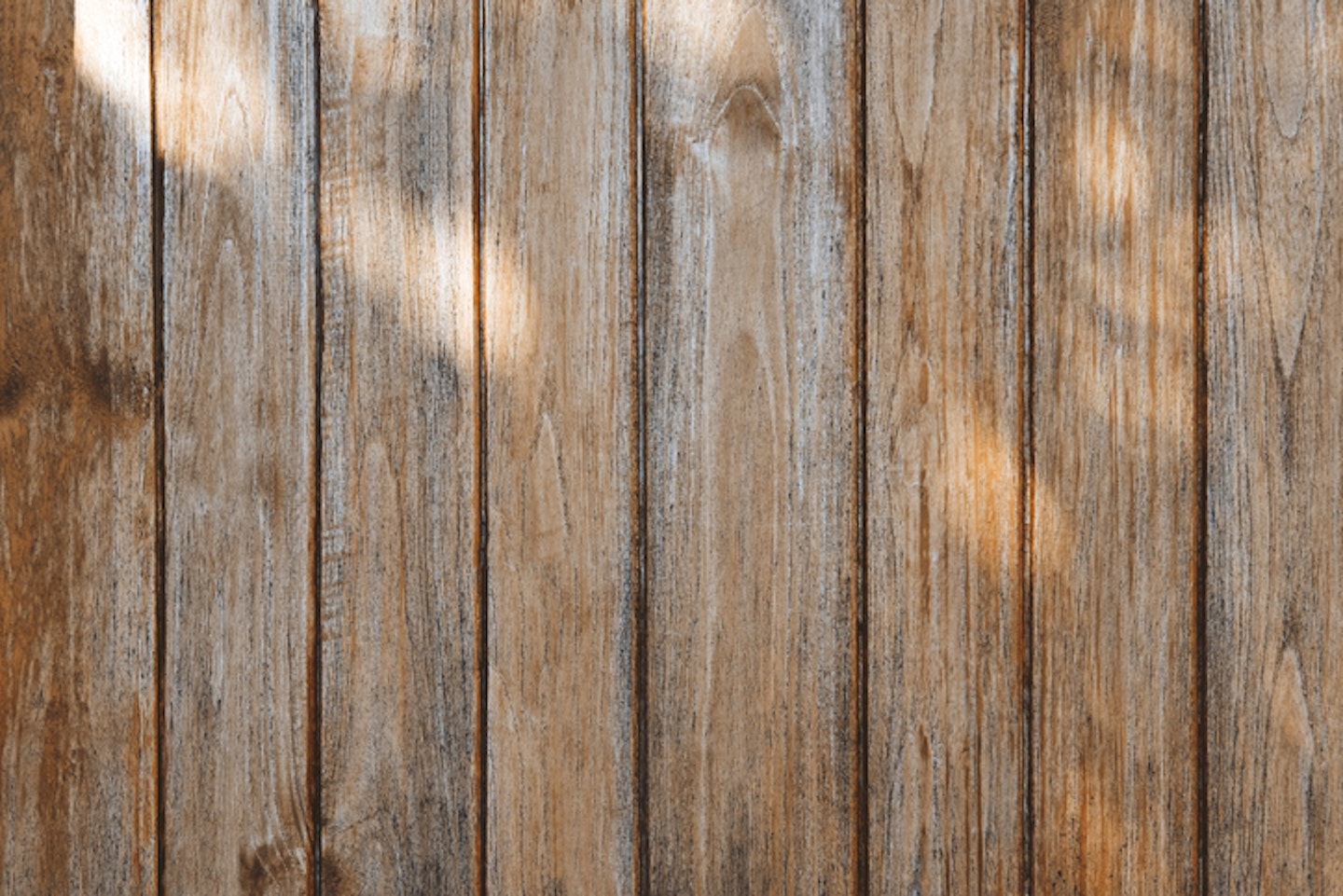
Wood-look composite fence panels
There is an increasing selection of composite fence panels on the market. Made from a combination of recycled plastic materials and wood fibres that are then extruded to form boards or fence panels, they are robust, weatherproof and need very little upkeep to keep them looking good – just a quick hose down or wipe with warm water and a mild detergent is enough to remove any dirt and debris. And there’s no need for tiresome repainting each year.
Designs vary from closeboard styles with grooved, smooth or woodgrain surfaces, with many boards having contrasting sides so you can customise further, to open slatted and trellis constructions. The posts and gravel boards are made from either sturdy composite or high-grade powder-coated aluminium to blend in or contrast with the fence boards or panels. Composite fence systems cost more than timber panels and posts but they’re quick and easy to install, need minimal maintenance and last for at least 15 years.
Good to know: As long as you’re not making it higher, you don’t need planning permission to replace a fence. Do check your deeds to see who owns the fence, though, and even if it’s yours, have a chat with your neighbour before starting work.
How to repair a fence panel
Whether time, and wear and tear, got the better of your garden fence, or you've been hit by adverse weather conditions, chances are you'll have to carry out some fence-related maintenance at some point.
The good news is that replacing a fence panel is a job most people can carry out with the average household tool kit. Here are a few simple steps to guide you through the process.
• Safety first! Gardening gloves and safety goggles are recommended to protect you from splinters and flying debris.
• If the panel that needs replacing hasn't completely come away from its neighbouring panels, you need to remove it. Do this with a crowbar, or similar sturdy tool, then hammer flat any protruding nails that remain in the fence posts.
• Offer up the new fence panel to ensure it's a fit, then lay it flat and drill pilot holes in either end. For most average fence panels, six evenly spaced on either side should suffice.
• You'll need a second pair of (gloved!) hands for the next stage. Holding the fence panel in place, hammer large, preferably galvanized, nails through the holes in the fence panel into the fence post. You may want to first use a spirit level to check the panel is straight.
• Fit any fence caps or tops as required, then treat or paint the panel as fits the look of your fence.
What to read next
Discover everything you need to know to make your outside space look fantastic, quickly and easily, with hundreds of simple ideas, designer tricks, affordable products and expert advice with a Modern Gardens Membership. Find out more about the benefits of being a Member now.
Angie Kenny is production editor of Modern Gardens magazine. She loves spending time in her garden with her husband Alan and their three cats Rupert, Darcy, and Frankie.
